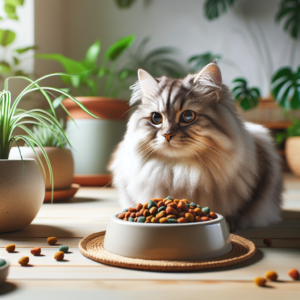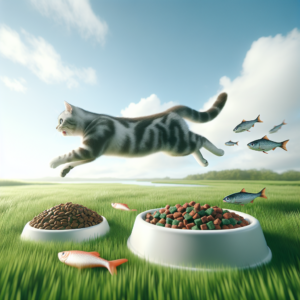
Cats are obligate carnivores with specific dietary and nutritional needs that differ significantly from other pets like dogs. An optimal feeding schedule not only ensures that your feline friend receives the necessary nutrients but also contributes to their overall health and well-being. Establishing the right feeding schedule can help prevent obesity, ensure proper digestion, and maintain your cat’s energy levels. This article provides a comprehensive guide to creating an optimal feeding schedule tailored to boost your cat’s health.
Understanding a Cat’s Nutritional Needs
Before diving into feeding schedules, it’s crucial to understand a cat’s nutritional needs. Cats require a diet high in animal protein, moderate in fat, and low in carbohydrates. Essential nutrients include taurine, arginine, arachidonic acid, and certain vitamins like vitamin A and D, which they must obtain from their diet as their bodies cannot synthesize these compounds.
Factors to Consider When Planning a Feeding Schedule
There is no one-size-fits-all feeding schedule for cats. Several factors should be considered when determining how often and how much to feed your cat:
Age
Kittens require more frequent feedings compared to adult cats. This is because they have smaller stomachs and higher energy needs to support their rapid growth and development.
Activity Level
Active cats or those with higher energy levels may require more frequent meals or higher calorie intake to maintain their energy balance.
Health Status
Cats with certain health conditions, such as diabetes or kidney disease, may need specialized feeding schedules and diets. Always consult with a veterinarian to tailor a feeding schedule that meets the specific health needs of your cat.
Spaying/Neutering
Spaying or neutering can alter a cat’s metabolism, often reducing their energy requirements. Adjustments in feeding schedules may be necessary to prevent weight gain.
Types of Feeding Schedules
There are three common types of feeding schedules for cats: free-feeding, meal feeding, and combination feeding. Each has its pros and cons, and the ideal choice depends on your cat’s lifestyle and health needs.
Free-Feeding
Free-feeding involves leaving dry food out for your cat to eat at their leisure. This method is convenient for pet owners and allows cats to self-regulate their food intake. However, it can lead to overeating and obesity, especially in less active or more food-motivated cats.
Meal Feeding
Meal feeding involves offering food at specific times throughout the day. This method allows for more controlled portion sizes and is ideal for monitoring food intake. It’s particularly beneficial for multi-cat households or cats with dietary restrictions.
Combination Feeding
Combination feeding involves offering both scheduled meals and a small amount of dry food for snacking. This approach can offer the benefits of both methods but requires careful monitoring to avoid overfeeding.
Developing an Optimal Feeding Schedule
An optimal feeding schedule should align with your cat’s natural instincts and lifestyle. Here’s a step-by-step guide to developing a feeding schedule that can boost your cat’s health:
Step 1: Determine the Right Food
Choose a high-quality cat food that meets the nutritional needs of your cat’s life stage (kitten, adult, or senior). Look for formulas rich in animal protein and essential nutrients.
Step 2: Calculate Daily Caloric Needs
The number of calories your cat needs daily depends on their age, weight, and activity level. Consult with a veterinarian to determine the appropriate caloric intake and adjust as needed.
Step 3: Choose the Feeding Method
Select a feeding method that suits your cat’s lifestyle and your schedule. Meal feeding is often the most recommended as it allows for better portion control.
Step 4: Set Feeding Times
Establish consistent feeding times that fit your daily routine. For most adult cats, two meals a day (morning and evening) are sufficient. Kittens may require three to four meals daily.
Step 5: Monitor and Adjust
Regularly assess your cat’s weight and body condition. Adjust portion sizes and feeding frequency if your cat is gaining or losing weight unexpectedly. A veterinarian can provide guidance if adjustments are needed.
Special Considerations
Feeding Senior Cats
Older cats may have different nutritional requirements and may benefit from foods designed specifically for seniors. They may also require smaller, more frequent meals, especially if they have dental issues or decreased appetite.
Feeding Cats with Health Conditions
Cats with health issues such as diabetes, kidney disease, or gastrointestinal problems may require special diets and feeding schedules. Work closely with your veterinarian to develop a plan that supports your cat’s health needs.
Conclusion
Establishing an optimal feeding schedule is crucial for maintaining your cat’s health and well-being. By considering factors such as age, activity level, and health status, you can create a tailored feeding schedule that supports your cat’s nutritional needs. Regular monitoring and adjustments, in consultation with a veterinarian, will ensure your cat remains healthy, active, and happy.
#ChatGPT assisted in the creation of this article.







